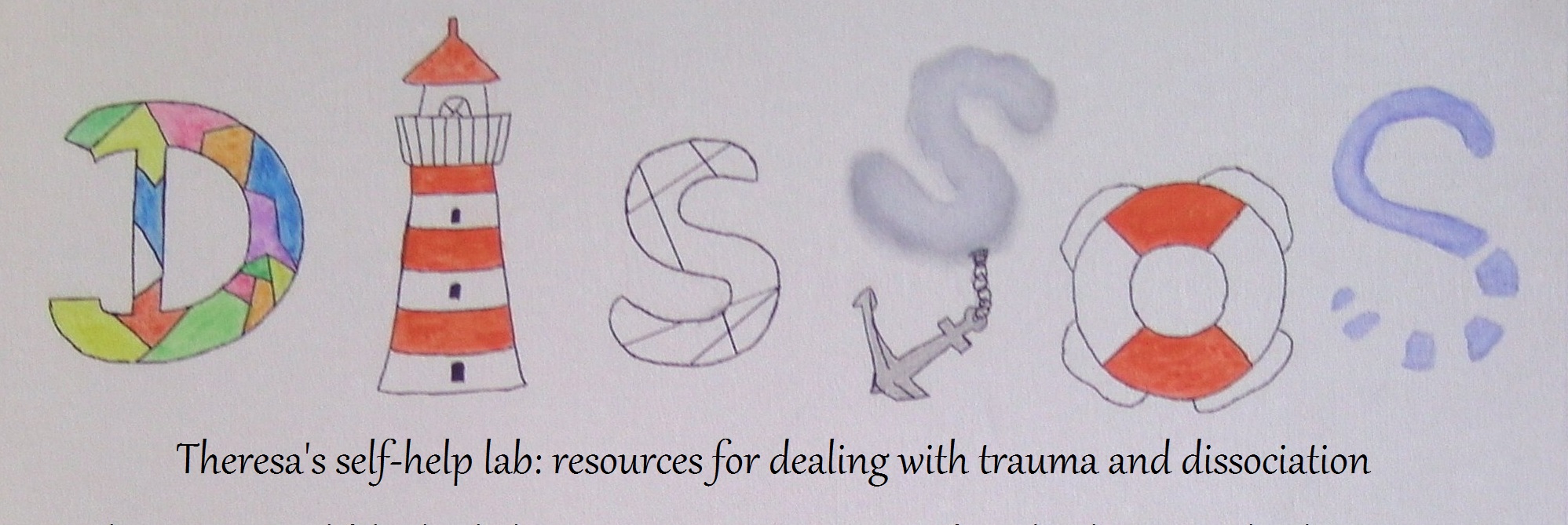The more recent literature that explains therapy approaches for DID seems to focus on impulsive behavior, visible stress responses and maladaptive coping like self-harm and drug use. It describes how demanding these patients are, how chaotic, and the kind of extreme boundaries it needs for therapists to protect themselves. I feel a growing unrest about […]
DID
The Hours after Trauma Processing
The basic idea behind trauma processing is that trauma memories were stored but they weren’t integrated into our memory properly. They never became part of our life history and when they come up, it feels like they are happening now. Completely over-simplified, we can say that something about them didn’t settle right. When we process […]
The Way of Tears (Spirituality and Suffering)
During my own therapy process, therapists notice that my system seems stable and well connected. We have strong inner bonds, we pace ourselves better than anyone from the outside could do it, and even trauma processing is kind of smooth and safe. We do have something like a secret recipe for that and I will […]
Integrating abuser-loyal Parts
Abuser-loyal parts often feel closely attached to abusers and hold warm feelings for them like love, gratefulness, awe etc. In the past, that was a helpful survival strategy because it has an appeasing effect. The efforts to please these people granted us more safety. We also split up the inner picture of abusive people in […]
Integrative Actions in Trauma Processing for DID
The concept behind trauma processing is usually to bring up the traumatic memory in a controlled setting, use an intervention to break up the fixed way in which it got stuck and then support the brain in re-organizing the memory in a new and more connected/integrated way. That is why you will find the term […]
Screen Technique in Trauma Therapy
For the Screen Technique, trauma patients are asked to imagine their memories like a movie on a screen. It is supposed to create some distance to the memory to avoid flooding. The memory is not happening right here right now, it is just on the screen. The pictures on the screen can then be changed […]
Preparing for Trauma Processing for DID
We can treat trauma processing like any other difficult situation and prepare for it by making a BDA Plan. It is a structured way to make sure that we have everything we need so that the therapy session can go smoothly. Being informed and organized takes at least some of the stress out of a […]
In the Mirror of the Other (advanced)
Our own integration starts in the thinking mind of our therapist I wrote that almost exactly 3 years ago when talking about the therapeutic relationship. As I move into later phases of therapy it seems to me that this is one of the most profound things I have ever said. So please forgive […]
Misinterpretations of DID-related behaviors (for helpers)
When we have DID, it is incredibly easy to get a misdiagnosis because the behaviors that we show based on our trauma history or inner experience get misinterpreted by mental health professionals. Common misdiagnoses are all kinds of personality disorders, bipolar disorder or schizophrenia. In some cases, we might show isolated behaviors that are considered […]
Grounded Rescripting with dissociative parts
In Rescripting Techniques we work with the traumatic memory by looking at the scene and then changing things about it in our imagination to resolve the situation and bring it to a new and better ending. It is often done in the form of a rescue mission where our present self or adult parts enter […]
Epiphany #11: The Difference
What would make a difference? This is an essential question in DID therapy. Many of the normal therapy tools fail to reach deeper into the system than the facade of a host. The host agrees to do what is asked. They always do what they are supposed to do. But, does it make […]
Earned secure attachment within a DID system
Everyone has attachment. It is how humans are built. Not everyone has secure attachment though. The 3 insecure attachment types are anxious/preoccupied, avoidant/dismissive and disorganized. The vast majority of people with DID have disorganized attachment when we look at the whole person. This presentation is based on some parts who are attachment seeking and anxious […]
- 1
- 2
- 3
- …
- 8
- Next Page »
